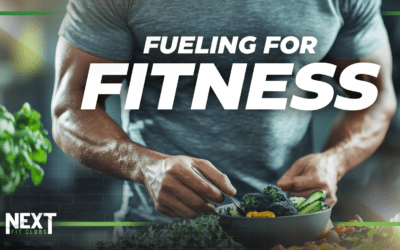Eat Whatever You Want! Still Lose Weight and Look Great: A GUIDE TO FLEXIBLE DIETING
Flexible dieting, also known as If It Fits Your Macros (IIFYM), is a sensible dieting approach that I, for one, find to be the most sustainable long term. Probably because it still allows me to enjoy my favorite foods, like Double Stuff Oreos, as long as I can fit them into my macronutrient requirements for the day. Tracking macronutrients will influence body composition more than just tracking calories.
WHERE TO START WITH FLEXIBLE DIETING
If you’d like to give flexible dieting a try, the first step is to calculate your total daily energy expenditure or TDEE. This is the amount of calories you burn per day. To lose weight, YOU MUST consume less calories than you burn per day. To maintain your current weight, eat at your TDEE. The next step is to figure out your macronutrient goals. The final step is to track your food intake and meet your macronutrient requirements for everyday.
THE THREE MACRONUTRIENTS
The 3 macronutrients we track are Protein, Carbs, and Fats.
1 gram of Protein – 4 calories
1 gram of Carbohydrates – 4 calories
1 gram of Fats – 9 calories
If your TDEE is 2000 calories and your macronutrient goal is 35 % Protein, 40% carbs, 25% fats. Your macronutrient goals would be to consume, 175 grams of protein, 200 gram of carbs, and 55 grams of fat.
WHAT TO EAT ON A FLEXIBLE DIETING PLAN
Now this is where things get fun because with flexible dieting there are no magical foods. You can literally eat whatever you want and still improve your body composition and/or lose weight. Although it is highly recommended that you consume at minimum 75-80% Whole Foods daily. 1 cup of brown rice is 45 grams of carbs. 1 plain bagel is also about 45 grams of carbs. A carb is a carb regardless of where it comes from. Now your body will use these foods differently when it comes to using it as fuel, leaving you feeling satiated, but when it comes to body composition it does not matter.
YOUR MAIN GOAL
My #1 goal is to hit my protein intake everyday. Protein is essential when it comes to building muscle. Improving body composition isn’t just about losing weight. It’s adding muscle while losing body fat. You will not build muscle if you are not consuming a sufficient amount of protein daily. Without getting into the science-y stuff too much, it will also allow your body to burn fat easier. Once I hit my protein goals, I can now work on filling my other two macronutrients. If I’m under my calorie goal for the day, I can now pretty much eat whatever I want to fill the remaining calories allotted. So if I have 45 carbs left, I can have that brown rice, or that bagel, or 4 Double Stuff Oreos, or a slice of pizza.
THINGS TO CONSIDER BEFORE FLEXIBLE DIETING
There are some downsides to flexible dieting though. Some of the foods you eat may not be very nutrient dense. Which means most likely, you will get hungry quicker. Some people may find it difficult to not eat when they are hungry and the structure of flexible dieting “too loose”. This usually leads to overeating, increase in body fat, and weight gain. So you must have a decent amount of willpower to not over exceed your macro totals. Another downside is you must be very meticulous with tracking your food. A food scale is almost a priority and you must include everything you eat. Every ounce of chicken, tablespoon of peanut butter or salad dressing, and those 13 M&Ms all must be accounted for. Food Tracking is either done incorrectly or simply too much of an inconvenience for most. Flexible dieting may be a great style of eating for some but its not for everyone. You still must eat ‘clean’ a majority of the time in order to see success with this. Although you may be able to ‘Eat Whatever You Want’, it must be in modest amounts. If you have a good understanding of nutritional needs, have strong self control, and really like Double Stuff Oreos flexible dieting may the perfect plan for you.
– Coach Kevin





0 Comments